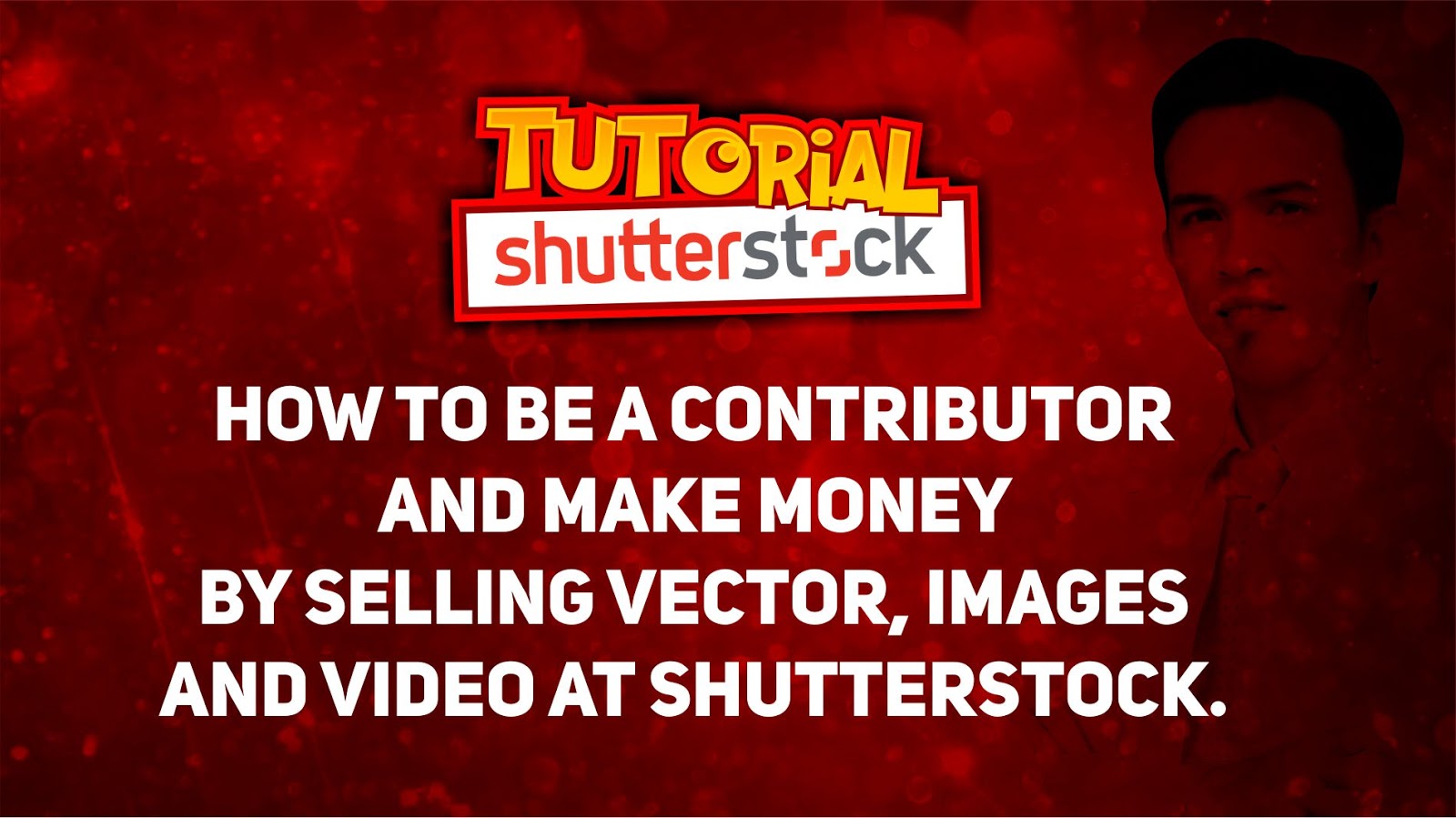If you’re passionate about photography, videography, or digital art, Shutterstock might just be the perfect platform to showcase your work and earn some income. As one of the world’s leading stock content marketplaces, Shutterstock offers a fantastic opportunity for creators to reach a global audience. Becoming a contributor means you can upload your photos, videos, and illustrations, and get paid whenever someone licenses your content. Whether you’re a seasoned professional or just starting out,
Understanding Shutterstock’s Requirements for Contributors

Before you jump into uploading your work, it’s important to understand what Shutterstock looks for and the requirements you need to meet to become a successful contributor. First off, quality is key. Shutterstock is all about high-quality, professional content that appeals to a broad audience. This means your images and videos should be well-composed, sharply focused, and free of distracting elements.
Here are some of the main requirements you should keep in mind:
- Technical Quality: Files should be in the appropriate format (JPEG for photos, MP4 or MOV for videos), with a minimum resolution of 4 megapixels for images. Videos should be at least 1080p HD quality.
- Original Content: All submissions must be your original work. Shutterstock has strict policies against copyright infringement and plagiarism.
- Model and Property Releases: For recognizable people or private property, you’ll need to provide proper releases. This is crucial for legal licensing and sales.
- Content Relevance and Commercial Appeal: Think about what buyers might be searching for—images that are versatile, on-trend, and relevant tend to perform better.
Another important aspect is understanding the submission process. Shutterstock reviews each submission to ensure it meets their quality standards. Sometimes, they may reject content that is slightly out of focus, poorly lit, or overly edited. To increase your chances of acceptance:
- Follow submission guidelines carefully. Read their detailed contributor guidelines available on their website.
- Curate your portfolio. Upload your best work first and focus on maintaining consistency in style and quality.
- Stay updated on trends. Keeping an eye on current popular themes can help you create content that sells better.
Lastly, remember that Shutterstock values diversity and originality. So, while it’s good to understand what works, don’t be afraid to showcase your unique perspective and creative voice. With patience and persistence, understanding these requirements will set you on the right path to becoming a successful Shutterstock contributor.
Preparing Your Portfolio for Submission

So, you’re excited to become a Shutterstock contributor? That’s fantastic! The first big step is preparing a solid, eye-catching portfolio that showcases your best work. Think of your portfolio as your digital storefront — it needs to reflect your unique style, professionalism, and creativity.
Here are some key tips to get your portfolio ready:
- Showcase Your Best Work – Quality over quantity is the name of the game. Select images, videos, or illustrations that truly stand out. Make sure they’re sharp, well-composed, and technically perfect.
- Follow Shutterstock’s Content Guidelines – Familiarize yourself with their content requirements. They prefer original, high-resolution, and commercially viable content. Avoid overly edited or heavily filtered images that could look unnatural.
- Diversify Your Portfolio – Include a variety of subjects, styles, and themes. This shows Shutterstock you can produce versatile content that appeals to a broad audience.
- Organize Your Files – Clear, descriptive filenames and organized folders make it easier for reviewers to assess your work. For example, use filenames like “Sunset_Beach_1234.jpg” instead of random numbers.
- Metadata Matters – Prepare relevant keywords, titles, and descriptions for your images. Good metadata helps your content get discovered by buyers.
Remember, your portfolio is a reflection of your skills and style. Take your time to curate it thoughtfully, and don’t be afraid to revisit and update it regularly as you create new work. The goal is to present a cohesive, professional collection that makes it easy for Shutterstock reviewers and buyers to see your potential.
Step-by-Step Guide to Applying as a Shutterstock Contributor
Getting started with Shutterstock is straightforward, but it helps to know the step-by-step process. Let’s walk through it together so you can confidently submit your application and start contributing.
Step 1: Create a Contributor Account
Visit the Shutterstock Contributor Signup Page and click on the “Join Now” button. Fill out the registration form with your email, create a password, and agree to the terms. Make sure to use an email address you check regularly because you’ll receive important updates.
Step 2: Review the Contributor Guidelines
Before uploading any content, thoroughly read Shutterstock’s content guidelines. Understanding their policies on quality, subject matter, model releases, and technical specs is crucial for a smooth review process.
Step 3: Prepare Your Portfolio
As discussed earlier, gather your best work, ensure it meets technical standards, and organize it effectively. Double-check that all images or videos have relevant metadata, titles, and descriptions.
Step 4: Upload Your Content
Log into your contributor dashboard and navigate to the upload section. You can upload files individually or in batches, depending on your preference. During upload, you’ll be prompted to add titles, descriptions, keywords, and select categories for each piece.
Step 5: Submit for Review
Once your content is uploaded and metadata added, submit it for review. Shutterstock’s review team will evaluate your submissions based on quality, originality, and compliance with guidelines. This process can take a few days to a couple of weeks.
Step 6: Await Feedback and Respond
If your submissions are approved, congratulations! Your work will go live on the platform, and you can start earning. If some items are rejected, don’t be discouraged. Review the feedback carefully, learn from it, and refine your work before resubmitting.
Step 7: Continue Creating and Uploading
The key to success on Shutterstock is consistency. Keep creating high-quality content, uploading regularly, and engaging with the platform’s community. Over time, your portfolio will grow, and so will your earnings.
And that’s it! With these steps, you’re well on your way to becoming a Shutterstock contributor. Just stay patient, keep honing your craft, and enjoy the journey of sharing your visual stories with a global audience.
Tips for Increasing Your Chances of Acceptance
Getting accepted as a contributor at Shutterstock can feel like a big hurdle, but with the right approach, you can improve your chances significantly. Here are some practical tips to help you stand out and get that initial approval:
- Understand Shutterstock’s Guidelines: Before you start submitting, thoroughly review their content guidelines. They have specific requirements for image quality, relevance, and originality. Familiarize yourself with their accepted formats, technical specs, and subject matter preferences.
- Create High-Quality Content: Quality is king. Make sure your images are sharp, well-lit, and properly composed. Use decent equipment or editing tools to enhance your photos. Avoid noisy, blurry, or poorly composed shots—these are often rejected.
- Focus on Trends and Demand: Keep an eye on trending topics and popular themes. Shutterstock’s marketplace favors content that buyers are actively searching for. Use their trending collections or keyword tools to identify what’s in demand.
- Be Original and Unique: Don’t just replicate what’s already out there. Bring your own style or perspective to your images. Original content stands out and is more likely to be accepted.
- Submit Consistently and Patiently: Don’t get discouraged if your first few submissions aren’t accepted. Keep submitting regularly, learn from any feedback, and refine your work. Persistence pays off!
- Use Proper Keywords and Titles: When uploading, craft accurate, descriptive titles and tags. Proper metadata helps your content get discovered and increases your chances of acceptance because it shows professionalism and attention to detail.
Remember, the acceptance process can take some time, and rejection isn’t the end—use it as a learning opportunity. The more you understand what Shutterstock looks for, the better your chances become!
Optimizing Your Content for Better Visibility and Sales
Once you’re accepted as a contributor, your next goal is to get your content seen and purchased. Optimization is key to boosting visibility and increasing your sales on Shutterstock. Here’s how you can do it:
- Use Effective Keywords: Think like a buyer. Use relevant, specific keywords that accurately describe your content. Include both broad and niche terms. Avoid keyword stuffing—be natural and precise.
- Write Clear, Descriptive Titles and Descriptions: Your titles should be straightforward and include main keywords. Descriptions can provide context, tell a story, or highlight unique aspects of your content. This helps buyers find your work more easily.
- Leverage Metadata Properly: Fill out all metadata fields accurately. Proper metadata not only helps in search rankings but also ensures your content is presented professionally.
- Stay Consistent and Strategic with Uploads: Regularly upload fresh content to keep your portfolio active. Consider seasonal or trending topics to maximize relevance and sales opportunities.
- Organize Your Portfolio: Categorize your images into relevant collections or portfolios. This makes it easier for buyers to browse and find multiple related items, increasing the chance of multiple sales.
- Analyze and Adjust: Use Shutterstock’s contributor analytics to see which of your images perform best. Pay attention to views, downloads, and earnings. Use this data to refine your future submissions—focus on what works!
- Engage with the Community: Participate in forums, follow trends, and stay updated on Shutterstock’s platform updates. The more engaged you are, the better you can adapt your strategy for visibility and sales.
Optimizing your content isn’t a one-time task—it’s an ongoing process. The more effort you put into making your content discoverable and appealing, the more likely you are to generate consistent income as a Shutterstock contributor. Keep learning, experimenting, and refining your approach, and you’ll see your sales grow over time!
Maintaining Quality and Consistency as a Contributor
Once you’ve started submitting your work to Shutterstock, the journey doesn’t end there. In fact, maintaining high quality and consistency is key to building a successful portfolio and keeping the reviewers happy. Think of it like running a small business — your reputation depends on the reliability and excellence of your products. Here are some tips to help you stay on top of your game:
- Follow Shutterstock’s Submission Guidelines: Every platform has its rules, and Shutterstock is no different. Make sure to read and understand their technical requirements, such as image resolution, file formats, and keywording standards. Adhering to these guidelines ensures your submissions are accepted and that your work looks professional.
- Focus on Originality and Creativity: While it’s tempting to jump on trending topics, strive to bring fresh perspectives or unique styles to your work. Originality makes your portfolio stand out and attracts buyers looking for something different.
- Maintain Consistent Style and Theme: If you specialize in certain niches—like nature photography, minimalistic graphics, or corporate icons—try to keep your style consistent. This not only helps in building your brand but also makes your portfolio more attractive to specific customer segments.
- Invest in Quality Equipment and Editing: High-resolution images, clean compositions, and professional editing make a big difference. Use good cameras or smartphones with excellent cameras, and learn basic editing techniques to enhance your work without overdoing it.
- Regularly Review and Update Your Portfolio: Keep an eye on your submissions and remove or revise outdated or underperforming work. Add new content regularly to show that you’re active and committed.
- Seek Feedback and Learn from Others: Participate in online forums or communities for Shutterstock contributors. Sharing your work and receiving constructive criticism can help you identify areas for improvement and stay motivated.
Remember, consistency doesn’t mean perfection—it’s about delivering dependable quality that meets Shutterstock’s standards. Over time, this dedication will build your reputation and increase your chances of earning more as a contributor.
Additional Resources and Support for Shutterstock Contributors
Embarking on your journey as a Shutterstock contributor can feel overwhelming at first, but luckily, there are plenty of resources available to help you succeed. Whether you’re just starting out or looking to refine your skills, leveraging these tools and communities can make a big difference:
Official Shutterstock Resources
- Contributor Dashboard: Your personalized hub for uploading content, tracking earnings, and managing your portfolio. Regularly check this for updates and important notices.
- Help Center: A comprehensive library of articles covering submission guidelines, technical specifications, licensing, and troubleshooting. Bookmark this as your go-to reference.
- Shutterstock Blog: Tips, success stories, and industry insights that can inspire and inform your work.
Educational and Community Platforms
- Online Courses and Tutorials: Platforms like Skillshare, Udemy, and YouTube offer tutorials on photography, graphic design, and editing techniques tailored for stock contributors.
- Photography and Design Forums: Communities such as Flickr, Reddit (like r/StockPhotography), or dedicated Facebook groups where you can exchange feedback, ask questions, and learn from experienced contributors.
- Webinars and Workshops: Occasionally, Shutterstock and other organizations host live sessions that cover best practices, tips for increasing sales, or updates on platform policies.
Networking and Support
Connecting with fellow contributors can provide valuable insights and encouragement. Consider:
- Joining Contributor Groups on social media platforms to share experiences and get peer support.
- Attending Industry Events: Conferences or local meetups focused on photography, design, or digital content can help you stay inspired and learn about new trends.
- Reaching Out to Shutterstock Support: If you encounter technical issues or have questions about your account, their support team is there to help. Don’t hesitate to contact them for assistance.
Remember, becoming a successful Shutterstock contributor is a mix of creative talent, technical skill, and community engagement. Utilizing these resources and support channels will keep you motivated and informed along the way. Keep learning, stay persistent, and your efforts will pay off!


